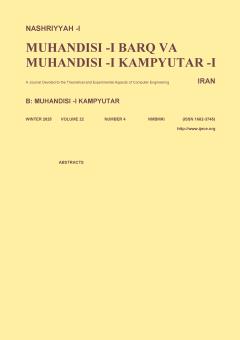About the journal
Recent Articles
-
Open Access Article
1 - A Parallel and Efficient Algorithm for Detecting Overlapping Communities in Social Networks
Mostafa Sabzekar Shima Baradaran Nejad Mahdi Khazaiepoor Mehdi KheradIssue 4 , Vol. 22 , Winter 2025 -
Open Access Article
2 - Mobility-Aware and Energy-Efficient Computation Offloading in Edge Computing for Multi-UAV based Networks
Kimia Ghasemi Zeinab MovahediIssue 4 , Vol. 22 , Winter 2025 -
Open Access Article
3 - Improving Delay and Energy Consumption in Task Offloading for Fog-Based IoT Networks Using Software-Defined Networks
reza khaleghi far Reza mohammadi Mohammad Nassiri Sakine sohrabiIssue 4 , Vol. 22 , Winter 2025 -
Open Access Article
4 - Stock Trend Prediction Using Sentiment Index and Enhanced SVM with an Entropy-Based Sentiment Cost Function
M. Yaghoubzadeh A. Ebrahimi moghadam M. Khademi H. Sadoghi YazdiIssue 4 , Vol. 22 , Winter 2025 -
Open Access Article
5 - Detection of Spam Pages Using XGBoost Algorithm
Reyhane Rashidpour Ali-Mohammad Zareh-BidokiIssue 4 , Vol. 22 , Winter 2025 -
Open Access Article
6 - Proposing a Deep Learning Based Solution for Detecting Suspicious Cases of COVID-19
Atena Abidi Haniye Jamahmoodi Zahra Heydaran Daroogheh Amnyieh iman zabbahIssue 4 , Vol. 22 , Winter 2025





